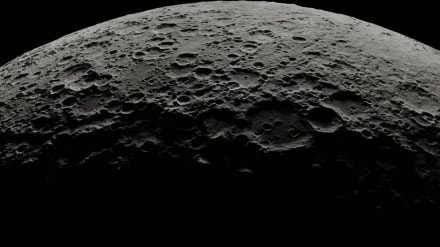A recent study by Indian space scientists suggests that there is a greater possibility of water ice occurring in the polar craters of the moon. The probe has also found that the spatial extent of subsurface water ice is significantly larger than the surface one in both of the lunar polar regions.
The scientists have said that the subsurface ice on the moon which is lying in the first couple of meters is about five to eight times larger than those found at the surface of both the lunar poles. The study has also found that the extent of water ice in the northern polar region is twice that in the southern polar region.
The study, which reveals the evidence for enhanced possibility of water ice occurrence in the polar craters of the moon, was conducted by ISRO’s Space Applications Centre (SAC) in collaboration with researchers from IIT Kanpur, University of Southern California, Jet Propulsion Laboratory, and IIT (ISM) Dhanbad, paving the way for further lunar missions.
Underlying how the finding will be instrumental in selecting the landing sites in further missions, the study said, “Accurate knowledge of the distribution and depth of water ice occurrence in the lunar poles is crucial for constraining the uncertainties involved in selecting future landing and sampling sites for missions aimed at utilising or characterising water ice.”
It said the information will be crucial for conducting future in situ water ice sampling at the lunar poles, which is necessary for sustaining potential human exploration of the moon. In 2020, NASA had confirmed that water molecules exist in the sunlit area of the moon, indicating that water may be widely distributed across the lunar surface.
NASA had said that data from its SOFIA mission confirmed molecules of H2O embedded within, or perhaps sticking to the surface of, grains of lunar dust. The moon is considered dry and according to NASA, the Sahara Desert has 100 times the amount of water than what the SOFIA mission detected in the lunar soil.
Earlier, several lunar missions such as ISRO’s Chandrayaan-1 and NASA’s Cassini and Deep Impact in the late 2000s had detected hydration on the lunar surface. However, they could not ascertain whether those signals were hydroxyl (OH) or water (H2O).
Scientists had also found that water molecules were locked in glasses and minerals in the samples that were returned through the Apollo missions. The majority of signals had been coming from craters at the lunar poles that don’t see sunlight and are quite cold which makes evaporation difficult for trapped water.
In 2019, NASA’s LADEE mission found that hydroxyl and water existed on the Moon even beyond the permanently shadowed regions, and was expelled through micrometeorite impacts.
Quest to find water on celestial bodies other than earth is not limited to the moon. Scientists have found evidence of oceans on other planets and moons in our solar system.
They believe that several moons in our solar system have subsurface liquid water deposits, with Saturn’s moon Enceladus and Jupiter’s moon Europa being likely candidates. They have even observed water plumes spurting out of Enceladus and are of the view that such kinds of plumes can also be found on Europa. It is also suggested that more than a quarter of known exoplanets — planets that orbit other stars — may have liquid water. However, the majority might have subsurface oceans like those on Europa and Enceladus.
